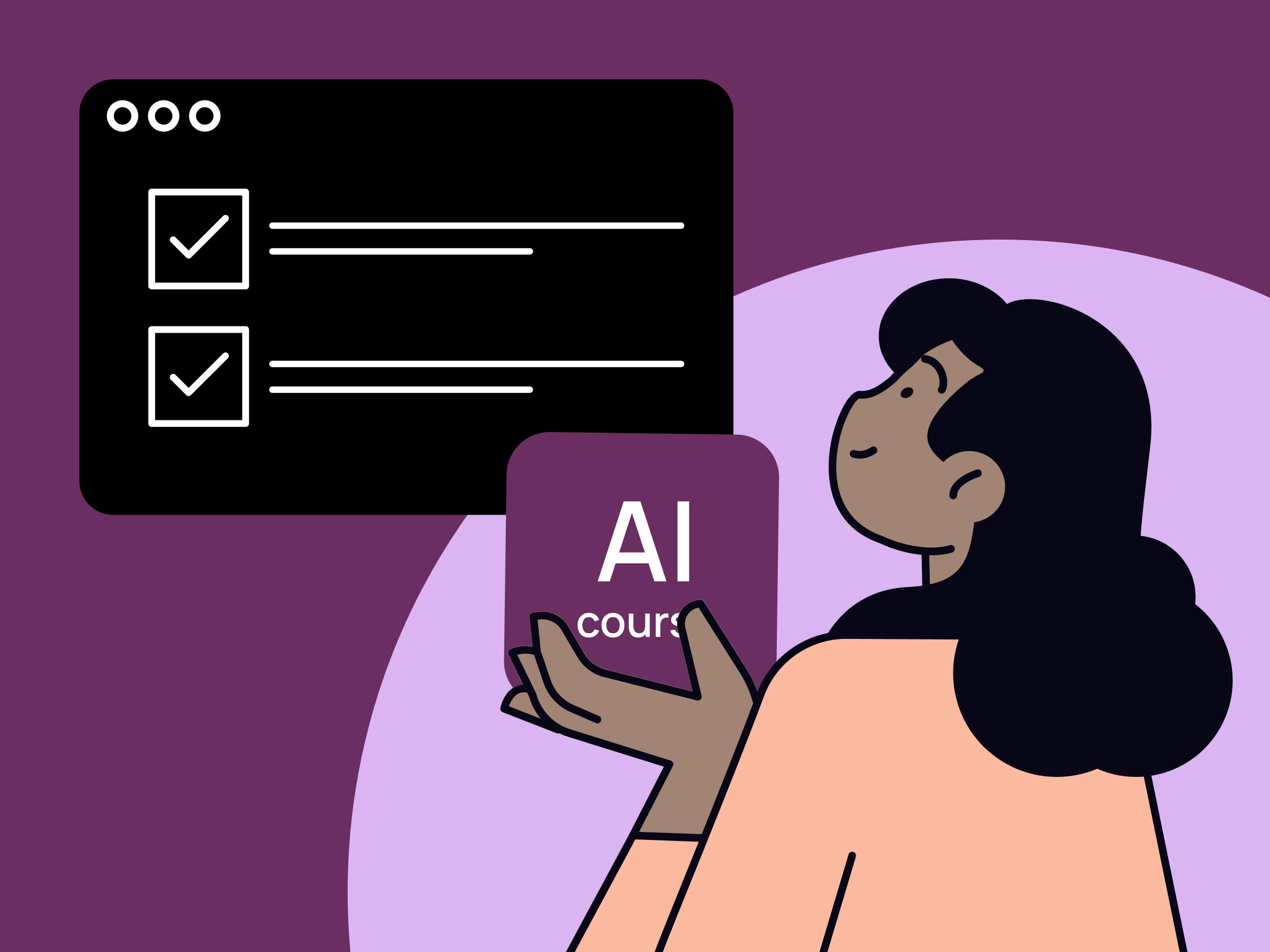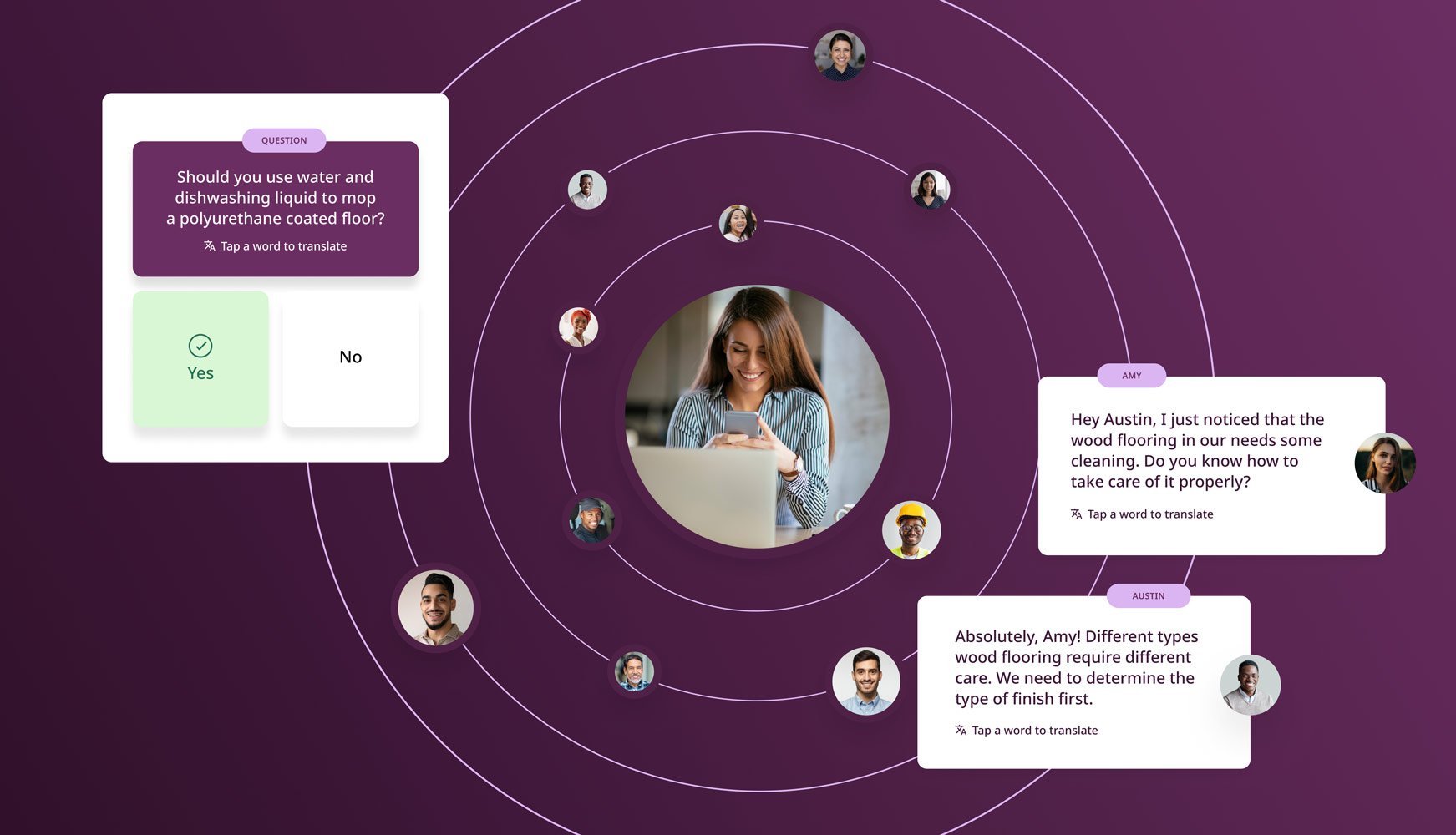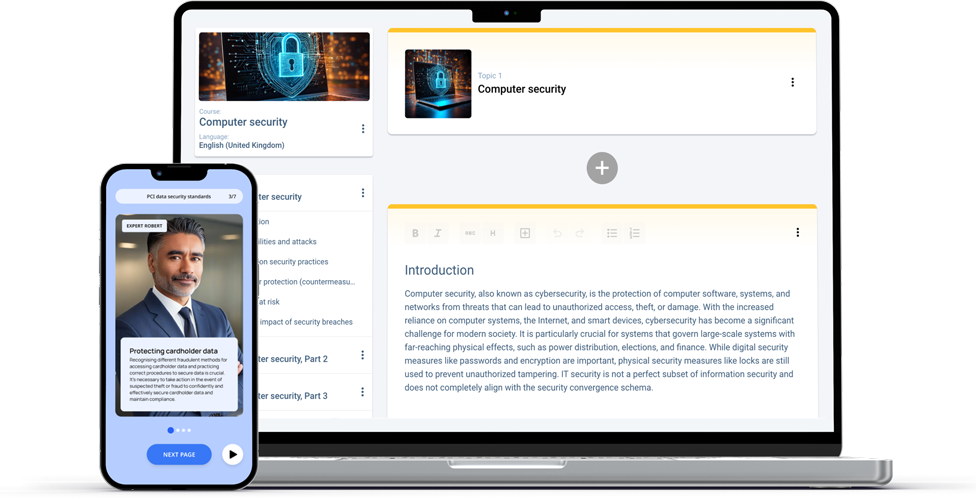Overcoming challenges in AI course creation
If you want to create an online course using AI, knowing there are challenges to consider is essential. Let's explore how to gracefully tackle these hurdles and create AI-generated courses that are smart, impactful, and ethically responsible.
1. Technical challenges
Stepping into the world of AI can feel like learning a new language. There's a lot of tech jargon, complex software, and data analysis involved. If you’re new to using an AI course generator, the key is to start simple.
Choosing user-friendly tools that don't require advanced technical skills is essential when using AI for creating courses. Plenty of intuitive eLearning platforms are designed for people without any tech experience.
And remember, it's okay to ask for help. Collaborating with tech-savvy colleagues, hiring a tech consultant, or contacting your AI course creator’s support team can make your experience much smoother.
2. Ethical considerations
While an AI course creator has the power to transform learning, it also raises concerns about data privacy and bias. As AI systems require large amounts of data to function effectively, there may be a risk of data breaches, misuse, or sharing incorrect information. It's crucial to choose AI tools that prioritise data security and privacy. And it’s essential to be vigilant about potential biases in AI algorithms, so be sure to review and update your AI tools regularly.
Additionally, there's the challenge of ensuring that AI tools are accessible to everyone, including those with disabilities, and that they don't amplify existing educational inequalities. The good news is that many eLearning platforms focus on inclusive learning for all, including Lingio. Lingio has recently partnered with the International Association of Accessibility Professionals (IAAP) in a decisive step towards reimagining workspace training.
"This collaboration is uniquely designed to foster digital inclusion and transform learning into a more accessible and fun experience that yields 12 times better results powered by gamification principles, modern pedagogy, and multi-language support," says Yashar Moradbakhti, CEO of Lingio.
Another concern is the potential reduction in human interaction in education, which is crucial for developing social skills and critical thinking. In many cases, learning from an AI course creator works well alongside in-person classes. Such is the case of The Spången Project, which accelerated teacher-led training by 4x with the help of Lingio’s AI courses.
3. Ensuring quality and relevance
Lastly, we must ensure that we maintain quality and relevance when we create courses using AI. At Lingio, we only use reliable AI, leveraging the most reliable sources to develop your training courses and extracting content from trusted databases like Wikipedia or from personally uploaded documents. Plus, during the course creation process, you can verify and edit AI-based suggestions and answers to ensure their accuracy before publishing.
When using AI to create online courses, remember that it’s a tool, not a replacement for good teaching practices. Be sure to continuously engage with learners to receive feedback when you create courses with AI.
With careful planning, ethical considerations, and a focus on quality, you can create a learning experience that's not just technologically advanced but also deeply enriching and inclusive.








